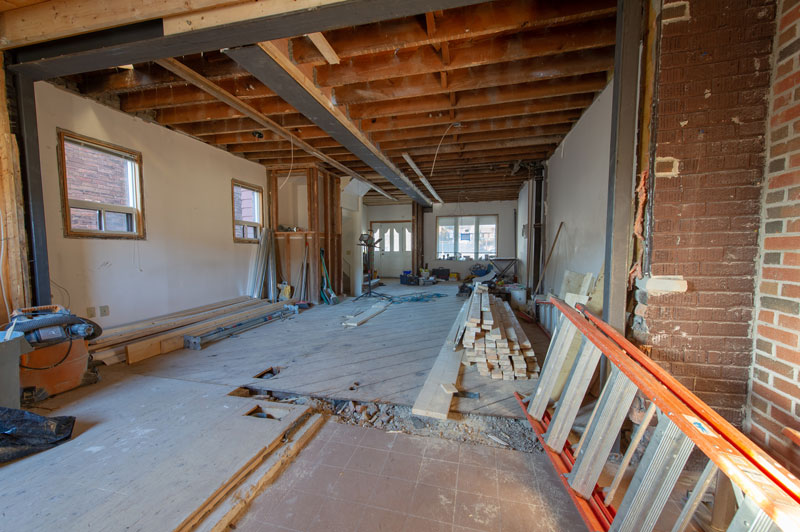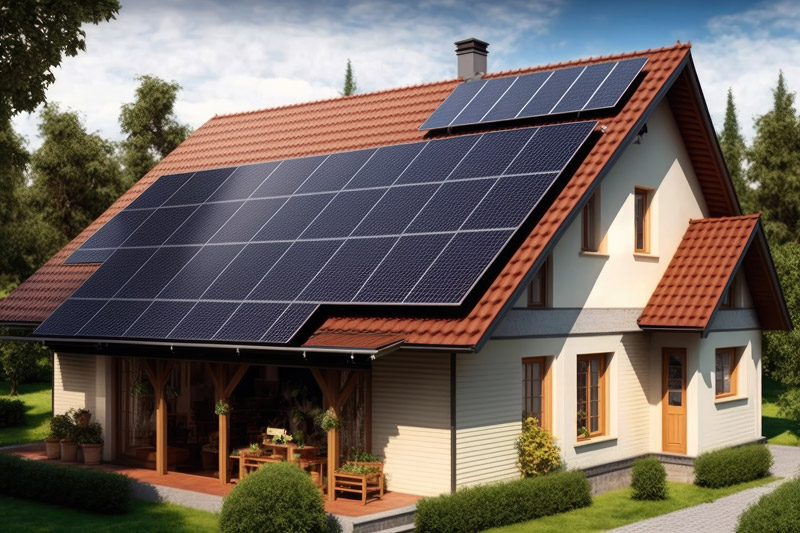Homeowners who are concerned about energy efficiency, comfort, and reducing their carbon footprint are often interested in retrofitting their homes. Retrofitting involves making improvements to existing homes to make them more energy-efficient, comfortable, and healthy. There are a variety of retrofit improvements that can be made to homes, but some are more effective than others. In this article, we will guide you through the most effective retrofit improvements for your home, including insulation, windows and doors, heating and cooling systems and lighting.
Insulation
Insulation is one of the most effective ways to reduce energy consumption in your home. Insulation helps to keep your home warm in the winter and cool in the summer, reducing the amount of energy required to heat and cool your home. There are several types of insulation available, including conventional insulation products such as fiberglass, breathable options such as cellulose, and closed cell products such as Polyisocyanurate (PIR). The most effective insulation for your home will depend on a variety of factors, including the age and construction of your home, your climate zone, and your budget.
Windows and Doors
Replacing old, inefficient windows and doors with energy-efficient models is another effective way to improve the energy efficiency of your home. Energy-efficient windows and doors are designed to minimize heat transfer, reducing the amount of energy required to heat and cool your home. Energy-efficient windows and doors also provide improved comfort, reducing drafts and noise pollution. When selecting energy-efficient windows and doors, look for models with a high Energy Star rating and low U-value. Additionally consider the orientation of your home and the amount of sunlight it receives.
Heating and Cooling Systems
Heating and cooling systems are responsible for a significant portion of your home’s energy consumption, so upgrading to a more efficient system can lead to significant energy savings. There are several types of heating and cooling systems available, including oil and gas boilers, heat pumps, and biomass boilers. When selecting a new heating and cooling system, consider the size and age of your home, your climate zone, and your budget.
Why Choose a Heat Pump?
Heat pumps are an energy-efficient alternative to traditional heating and cooling systems. Unlike traditional systems, which generate heat by burning fuel, heat pumps transfer heat from the air or ground into your home, using significantly less energy in the process. Heat pumps can provide both heating and cooling, making them a versatile option for homeowners. While heat pumps can be more expensive to install than traditional systems, they can lead to significant energy savings over time.
Lighting
Replacing old incandescent light bulbs with energy-efficient LED bulbs is another simple and effective way to improve the energy efficiency of your home. LED bulbs use significantly less energy than incandescent bulbs, and they last much longer, reducing the need for frequent bulb replacements. LED bulbs also produce less heat, which can help to reduce cooling costs in the summer. When selecting LED bulbs, look for models with a high energy efficiency rating and consider the color temperature and brightness of the bulbs.
DIY Energy Efficiency Tips for Homeowners
In addition to larger retrofit improvements, there are several simple, low-cost ways that homeowners can improve the energy efficiency of their homes. Some of these DIY energy efficiency tips include:
- Sealing air leaks around windows, doors, and other areas where air can enter or escape your home.
- Installing weather stripping around doors and windows to reduce drafts.
- Adding insulation to your attic, basement, and walls to improve energy efficiency.
- Turning off lights and appliances when not in use to reduce energy consumption.
- Installing low-flow showerheads and faucets to reduce water consumption.
Financing Options for Home Energy Upgrades
Home energy upgrades can be expensive, but there are several financing options available to help homeowners cover the cost of these improvements. Some financing options include:
- Energy efficiency mortgages, which allow homeowners to finance the cost of energy efficiency improvements as part of their mortgage.
- Home equity loans or lines of credit, which allow homeowners to borrow against the equity in their home to finance energy efficiency improvements.
- Green home improvement loans offered by banks and credit unions for anyone who is planning on making any improvements in their home to increase its energy efficiency.
- Energy efficiency rebates and incentives, which are often offered by state and local governments or utility companies to encourage energy efficiency upgrades.
To support the cost of the energy efficiency measures carried out there are a number of different grant schemes available from SEAI including individual and whole house retrofit options.
Reducing Your Home’s Water Consumption
Reducing your home’s water consumption is another effective way to improve its overall efficiency. There are several simple ways to reduce water consumption in your home, including:
- Installing low-flow showerheads and faucets to reduce the amount of water used for bathing and washing dishes.
- Fixing leaky faucets and toilets to reduce water waste.
- Installing a water-efficient toilet, which can save up to 13,000 gallons of water per year.
- Collecting rainwater for use in your garden or for other non-potable uses.
Access to Guidance, Resources, and Funding for Retrofitting
Retrofitting your home can be a complex process, and it can be difficult to know where to start. Fortunately, there are several resources available to homeowners who are interested in retrofitting their homes. Some of these resources include:
- Local energy efficiency programs, which can provide guidance and resources for retrofitting your home.
- Online energy assessment tools, which can help you to identify areas of your home that could benefit from retrofit improvements.
- Energy efficiency contractors, who can provide expert guidance on retrofitting your home, as well as installation services for energy-efficient upgrades.
- Government-funded retrofitting programs, which can provide financial assistance for energy efficiency upgrades.
Conclusion
Retrofitting your home can provide a variety of benefits, including improved energy efficiency, comfort, and indoor air quality. When planning your retrofit project, it’s important to consider which improvements will be most effective for your home and your budget. By prioritizing insulation, windows and doors, heating and cooling systems, lighting, and water efficiency, you can make significant improvements to your home’s energy efficiency and overall sustainability. Additionally, by taking advantage of resources and funding for retrofitting, you can make the process more manageable and cost-effective.
Image: AC Photography – stock.adobe.com





